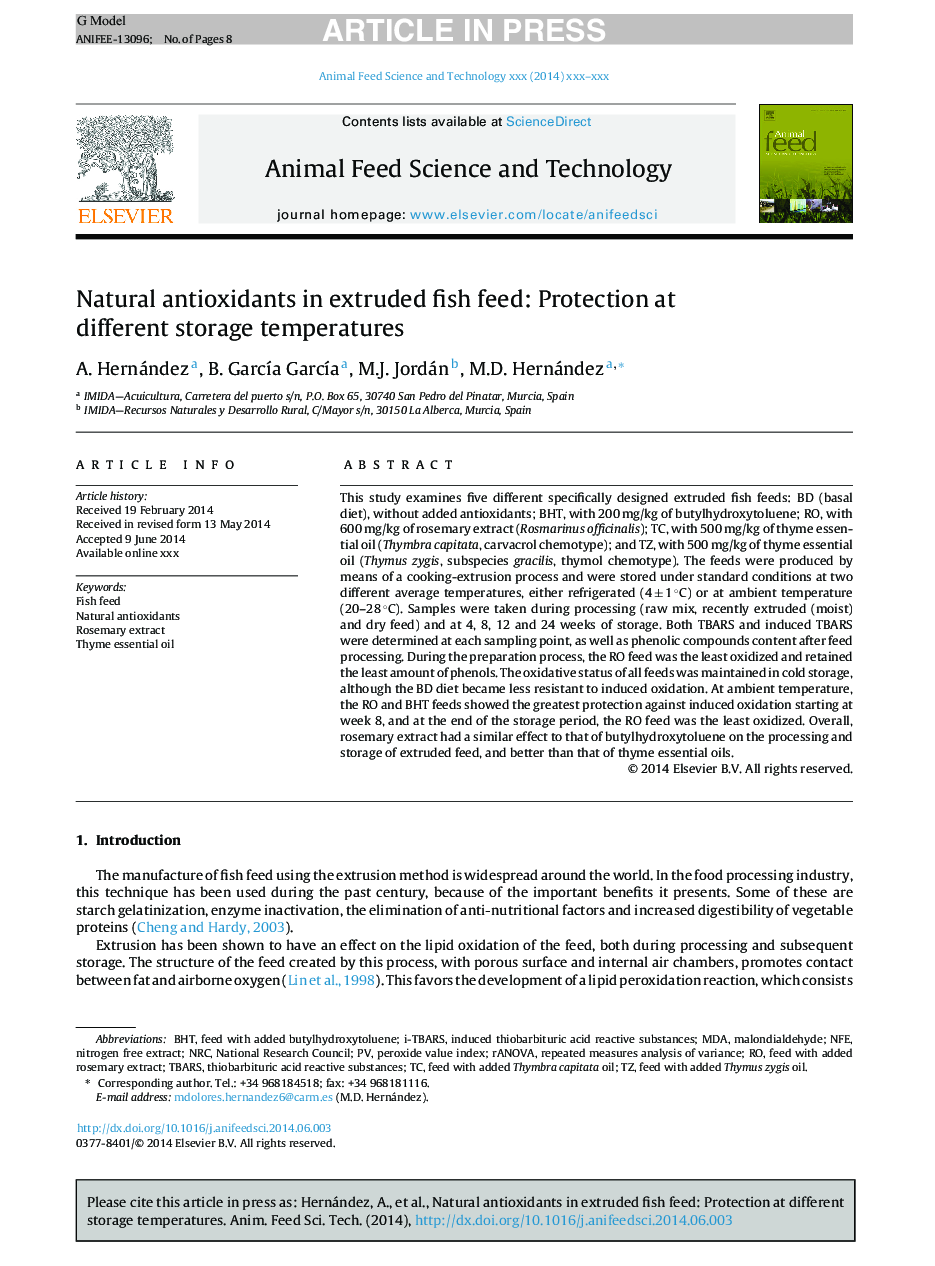| Article ID | Journal | Published Year | Pages | File Type |
|---|---|---|---|---|
| 8491681 | Animal Feed Science and Technology | 2014 | 8 Pages |
Abstract
This study examines five different specifically designed extruded fish feeds: BD (basal diet), without added antioxidants; BHT, with 200 mg/kg of butylhydroxytoluene; RO, with 600 mg/kg of rosemary extract (Rosmarinus officinalis); TC, with 500 mg/kg of thyme essential oil (Thymbra capitata, carvacrol chemotype); and TZ, with 500 mg/kg of thyme essential oil (Thymus zygis, subspecies gracilis, thymol chemotype). The feeds were produced by means of a cooking-extrusion process and were stored under standard conditions at two different average temperatures, either refrigerated (4 ± 1 °C) or at ambient temperature (20-28 °C). Samples were taken during processing (raw mix, recently extruded (moist) and dry feed) and at 4, 8, 12 and 24 weeks of storage. Both TBARS and induced TBARS were determined at each sampling point, as well as phenolic compounds content after feed processing. During the preparation process, the RO feed was the least oxidized and retained the least amount of phenols. The oxidative status of all feeds was maintained in cold storage, although the BD diet became less resistant to induced oxidation. At ambient temperature, the RO and BHT feeds showed the greatest protection against induced oxidation starting at week 8, and at the end of the storage period, the RO feed was the least oxidized. Overall, rosemary extract had a similar effect to that of butylhydroxytoluene on the processing and storage of extruded feed, and better than that of thyme essential oils.
Keywords
Related Topics
Life Sciences
Agricultural and Biological Sciences
Animal Science and Zoology
Authors
A. Hernández, B. GarcÃa GarcÃa, M.J. Jordán, M.D. Hernández,
